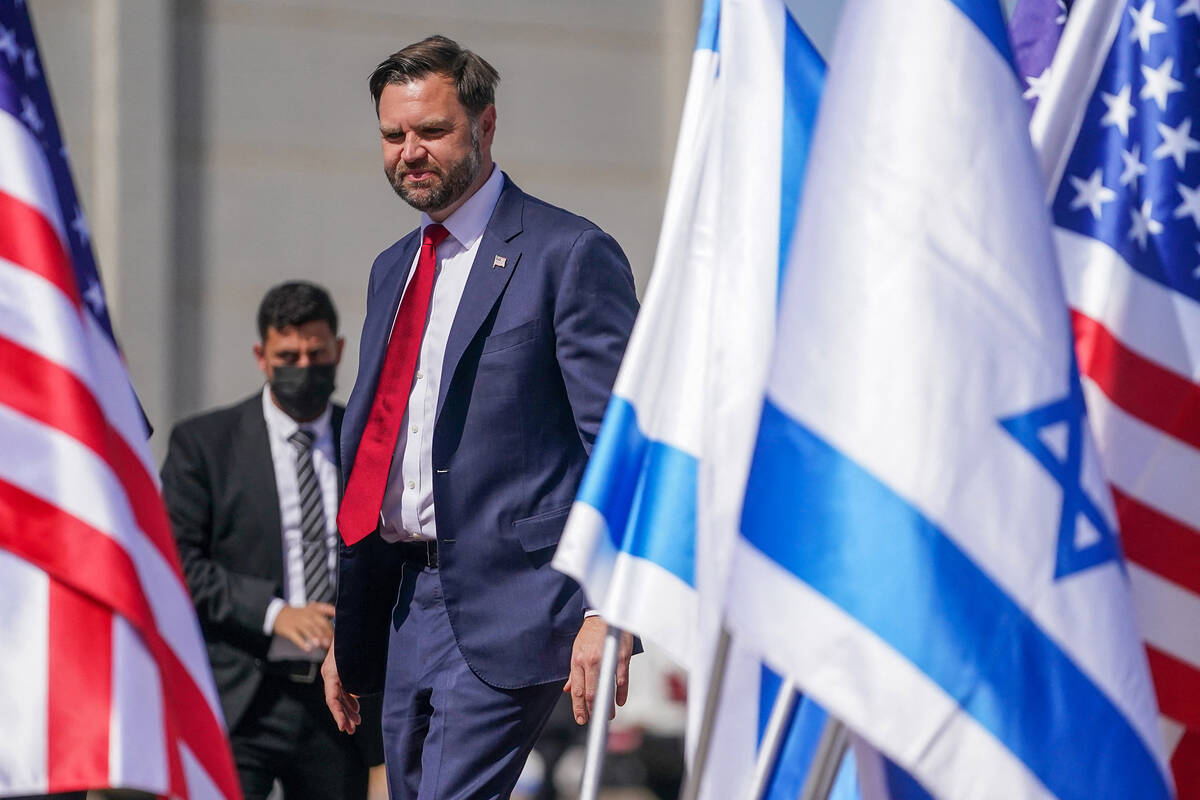Vance hails progress on Gaza peace accord despite violence
U.S. Vice President JD Vance said he remains optimistic about the future of a ceasefire between Israel and Hamas despite a flareup in violence over the weekend, part of a bid to keep talks progressing on the future of Gaza.
Vance spoke Tuesday at the base of a multinational monitoring force near Gaza. He traveled to the region about a week after President Donald Trump unveiled a U.S.-led agreement to end the two-year war between Israel and Hamas, starting with a truce and exchange of Hamas’s last living hostages for almost 2,000 Palestinian prisoners.
“There are going to be hills and valleys,” Vance said, flanked by Trump’s son-in-law Jared Kushner and presidential envoy Steve Witkoff. “There are going to be moments where it looks like things aren’t going particularly well. But given that, and given the history of conflict, I think that everybody should be proud of where we are today.”
Vance said the deal, which Trump and his team have hailed as a historic achievement, will “require constant monitoring and supervision.”
Trump’s team is pushing to keep the accord on track after a deadly Hamas ambush and Israeli airstrikes raised fears that the accord could be short-lived, and fail to progress to a second stage involving new governance and reconstruction of the war-ravaged territory.
Kushner downplayed the fighting, saying “a lot of people are getting a little hysterical about different incursions.”
The White House has said it expected the deal to be messy at first — with Trump repeatedly threatening Hamas with annihilation if the militant group doesn’t adhere to its terms — but expressed optimism that it won’t ultimately collapse.
Trump posted on social media earlier Tuesday that “numerous” countries in the Middle East and wider region had told him they would send forces into Gaza to destroy Hamas if needed, without naming them. But he added that “there is still hope that Hamas will do what is right.”
On arrival in Israel, Vance met with Witkoff and Kushner, who were both involved in the peace negotiations in Egypt earlier this month. He then traveled to the U.S.-led Civil-Military Coordination Center, or CMCC, based at a windowless commercial building outside Kiryat Gat, some 20 km (12 miles) from the boundary with Gaza, a narrow strip on the Mediterranean coast.
Commanded by a three-star U.S. general with a British deputy, the CMCC is staffed by 200 American troops and an undisclosed number of Israeli counterparts. With forces from the UK, United Arab Emirates, Egypt, Turkey and Qatar expected to join, the unit’s role is to monitor the ceasefire agreement and help coordinate humanitarian aid flows into Gaza.
Vance’s comments run counter to sentiment expressed by some Israelis, including Zev Elkin, a member of Prime Minister Benjamin Netanyahu’s security cabinet. He said Tuesday the war could yet resume.
“I don’t think this force is coming in to strip Hamas of its weaponry — I don’t see soldiers from Muslim or Arab countries fighting Hamas,” Elkin told Kan radio, referring to the multinational make up of the CMCC.
“Ultimately either Hamas will understand that it has no choice but to disarm, because it faces destruction, or — which is a more reasonable scenario in my mind — it will refuse to do this and we shall have to finish the job.”
The Netanyahu government has voiced frustration with the slow return of the remains of slain hostages by Hamas — another element of the initial phase of the peace deal. Hamas says that searching the Gaza ruins has been a challenge, and 15 bodies were unaccounted for as of Tuesday morning. Later, Hamas said it was preparing to hand over two more bodies to Israel.
Vance was similarly emphatic about the need for Hamas to lay down its weapons.
“Unless Hamas disarms in accordance with the agreement, very bad things are going to happen,” he said. At the same time Vance reiterated his promise there would be no U.S. boots on the ground in Gaza.
One senior foreign official involved in the CMCC voiced confidence that Hamas could be talked into laying down its arms — provided the quid-pro-quo includes the group having a say in postwar governance in Gaza alongside the withdrawal of Israeli forces.
_____

















